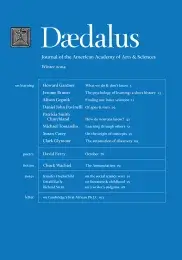What we do & don’t know
Suppose that we were commissioned to create a museum of learning. I don’t mean a stuffy, hands-off collection of old manuscripts or films, but rather a state-of-the-art exploratorium that displayed the full spectrum of learning types and, in vivid form, everything that is known about learning.1 Suppose, further, that we had a budget for consultants and were able to hire the seven experts whose essays are collected here. Presumably we would have in mind a number of guiding questions, among them: What examples of learning should we include? How should we conceptualize this enterprise? What progress has taken place in our understanding of learning in the last century or so, and how can these revolutionary insights inform the education of future generations? Finally, what puzzles remain?
In all probability our museum’s first displays would show humans learning: infants crawling, walking, talking; toddlers engaged in rough-and-tumble or imaginative play; youngsters (or oldsters) at school, learning their 3Rs and going on to master the disciplines and perhaps engage in interdisciplinary work. Casting our net more widely, we might exhibit a child learning to play a musical instrument, an apprentice working alongside a master builder, a medical student attending rounds, a recruit in the military, a physically injured person recovering the ability to walk, a victim of a stroke learning to talk or reason again.
Casting our net more widely still, to encompass the full range of learning among animals, our museum might include exhibits of sea slugs that learn to move in certain directions while avoiding others; fish that ‘imprint’ on certain physical forms and trail after these privileged forms throughout development; . . .
